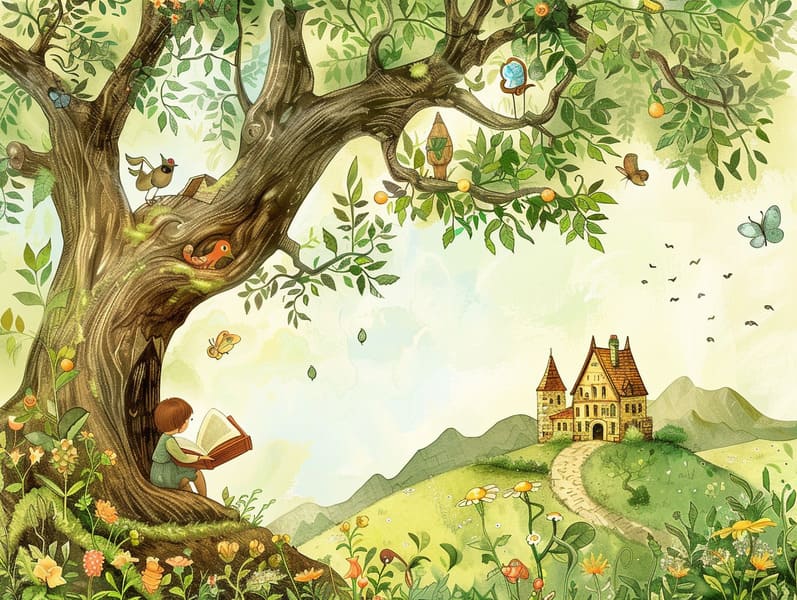The Creation of Children's Fairy Tales with Their Immortal Mystique.
The Creation of Children's Fairy Tales with Their Immortal Mystique.
Blog Article

Fairy tales for kids have historical significance. These narratives have been transmitted from one generation to the next long before they were ever put on paper. They sprang from a variety of civilizations, including African traditions. They were initially passed along among grown-ups, often carrying themes and messages aligned with the societal norms and beliefs of the time.
The Grimm brothers, Jacob and Wilhelm Grimm, were among the first to collect and release many of these beloved fairy tales. Their collection, "Grimm's Fairy Stories," included stories like "The Story of Cinderella," "Little Brother and Little Sister," and "The True Story of Snow White," which have since become staples in the world of classic fairy tales. Similarly, Hans Christian Andersen's enchanting tales, such as "The Mermaid," and "The Story of the Ugly Duckling," have touched hearts worldwide, establishing their place in the pantheon of timeless fairy tales.
Despite their ancient origins, fairy tales remain as applicable as ever, especially as nighttime stories for kids. These enchanting tales are now available in many formats, including beautifully illustrated books, enchanting animations, and digital storybooks.
Their enduring popularity can be credited to several captivating elements:
Ethical Lessons: Classic fairy tales often whisper important moral lessons. Tales like "The Story of the Boy Who Cried Wolf" teach the benefit of honesty, while "The Hare and the Tortoise" point out the merits of determination and meekness. These narratives offer little ones clear distinctions between truth and falsehood, helping to shape their moral compass in a mild yet important way.
Compassion and Knowledge: Fairy tales frequently include figures facing struggles and tests, provoking children to connect with their struggles and celebrate their triumphs. For instance, "The Story of Beauty and the Beast" highlights the necessity of appreciating inner worth to appreciate the inner self of a soul, nurturing sympathy and understanding.
Cultural Recognition: Many ancient fairy tales are rooted in the cultural contexts from which they blossomed. Engaging with these narratives can provide informative snapshots into different social structures, nurturing a sense of world respect and comprehension.
Fantasy and Imagination: The magical elements in classic fairy tales—talking beasts—generate children’s fantasies. These fairy tales move readers to imaginary realms, kindling creative ideas and a sense of curiosity that lasts a lifetime.
Ancient fairy tales are not only whimsical but also instructive. They provide magical tools in enhancing various cognitive and affective skills in kids. When fairy tales are spoken out loud, they strengthen speaking abilities by teaching new phrases and complex sentence structures. This practice also promotes listening abilities and attention, as the young track the narrative, looking forward to see what happens next.
Furthermore, talking about the themes and characters of old fairy tales can promote cognitive skills and analytical skills. Young ones are instructed to detect patterns, foresee events, and realize cause and effect. These deliberations also advance little ones express their thoughts and feelings, advancing their emotional intelligence.
In today’s digital age, the availability of online storybooks has made these stories more within reach than ever. Online platforms and programs give vast collections of Grimm's fairy tales that can be experienced or listened to anytime, anywhere. Fairy tales read aloud are particularly well-received, making available an entertaining method for kids to appreciate these captivating stories. Read-aloud stories and voiced videos guide characters and settings to life, often joined by delightful soundtracks and songs that heighten the narrative adventure.
The lasting appeal of ancient fairy tales lies in their ability to shift to modern days while holding onto their central values. Contemporary revisions of these tales often incorporate more different characters and modern settings, making them pertinent to today’s audience. However, the fundamental themes of braveness, warmth, and lawfulness remain unchanged, continuing to influence audiences of all ages.
Ancient fairy tales also offer a sense of peace and understanding. They confer a orderly narrative with a unmistakable beginning, middle, and end, often coming to a close with the settlement of conflicts and the triumph of truth over falsehood. This regularity can be comforting for little ones, rendering a sense of here constancy in an shifting world.
Old fairy tales continue to captivate and teach new generations, maintaining their allure and significance in modern society. As children's bedtime stories, they deliver up a perfect blend of allure and teaching, furthering moral values, empathy, and creativity. The presence of digital fairy tales and the widespread nature of fairy tales read aloud assure that these timeless stories remain obtainable to new generations.
By perpetuating and broadcasting these fairy tales, we continue to laud the rich tapestry of legends and cultural heritage. Whether you are enjoying a gorgeously illustrated book, enjoying a internet collection, or listening via an read-aloud story, the delight of classic fairy tales is always within reach. These tales illustrate of the enduring strength of storytelling and its ability to draw us together across epochs and places.
Regardless if you are seeing a vividly illustrated book, enjoying a internet collection, or listening to an sound book, the charm of ancient fairy tales is always within reach.
These fairy tales convey of the invariable presence of tales and its ability to join us across centuries and lands, creating a bond that delights and instructs alike.